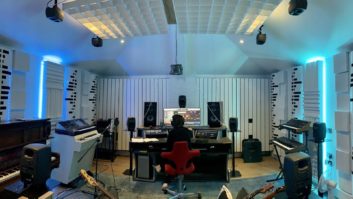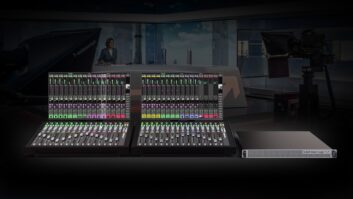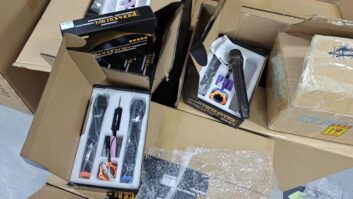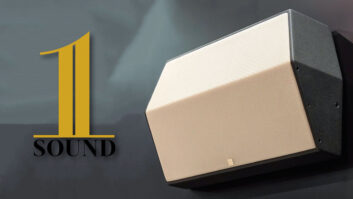
 This was Mix’s 11th most-read article of 2022!
This was Mix’s 11th most-read article of 2022!
Steven Wilson has established quite a reputation over the past decade or so for his 5.1 remixes of classic UK rock bands such as King Crimson, Jethro Tull, Gentle Giant, Yes, XTC, Black Sabbath and others. Music critics have certainly taken notice, and so too have Recording Academy members, who have nominated Wilson numerous times for a Grammy Award in the Best Surround Sound Album category.
Wilson, who lives in London, has now turned his sights on Dolby Atmos, though when he first experienced the immersive format, he admits, he didn’t really understand what it was: “I asked how many speakers Atmos was. They said, ‘As many as you want.’ How many channels? ‘As many as you like.’ I said, ‘That doesn’t compute!’”
Everything became much clearer when Wilson was invited to Abbey Road Studios to hear the Beatles’ Abbey Road album mixed in Atmos by Giles Martin. “I thought, I have to get myself set up for Atmos,” he recalls. “At the time, I was just getting married and moving to a new house, so it was an opportunity to design my studio around Atmos.”
A multi-instrumentalist, singer and songwriter, Wilson is probably best known as the driving force behind Porcupine Tree, the UK-based rock band that released 10 studio albums before going on hiatus in 2010 as he shifted focus to his solo career.
He had branched out into producing and mixing in the early 1990s, then got into 5.1 remixing in the mid-2000s, initially with Porcupine Tree projects, three of which were Grammy-nominated. Along the way, there have also been numerous collaborations and side projects—Bass Communion, Blackfield, Continuum, No-Man, Storm Corrosion, to name but a few—and a long, long list of guest contributions in a variety of capacities.
FIRST ATMOS MIXES
Wilson’s current solo album, The Future Bites, was released in January 2021 and was the first to get the Atmos treatment before he built his new room. “I went down to Dolby’s London studio and did it with the help of one of the Dolby guys, Jake Fields,” he explains. “I took a load of stems and learned a lot about how to create an Atmos mix and all of the quirks and differences between doing 5.1 and immersive mixes.” The album is nominated for Grammys this year in the Best Immersive Audio Album and Best Boxed Set or Limited Edition Package categories.
Wilson has a long-established relationship with Apple Logic’s developers, whom he first met when he started offering suggestions for ways to improve the software’s 5.1 implementation. No surprise, then, that he got an early copy of Logic 10.7, which added Dolby Atmos tools, and which he has used on all of his immersive mixes to date. He’s been using it in tandem with the Dolby Audio Bridge into the renderer, he says, for the Atmos sequencer: “I love the sequencer and being able to draw moves then choose the speed. There’s nothing like that in the Logic implementation yet. But I’m sure there will be.
“I always start with a 5.1 mix and that becomes the bed of my Atmos mix,” he continues. “At that point, I listen and think, ‘That sound in the rear speakers would be great coming out of the side speakers.’ I’ll take that out of the bed, assign it to a stereo Atmos object, and place it. I understand that it’s partly because I have this institutional history of doing things in 5.1. If I was starting from scratch, I would probably get into the business of making my bed 7.1, because that’s what Atmos is supposed to be.”
Apple Goes Spatial – Part 1: What’s It All Mean?
Because of that workflow, he says, “I probably end up taking more stuff out of the bed because I want stuff just in the sides or just in the rears. When you have a 5.1 bed and you transition to Atmos, anything in the back becomes back and sides equally. If you want anything only in the back or only the sides, you have to take it out of the 5.1 bed.”
He typically also does a new stereo mix of the project. “I work quite hard on a stereo mix, finding a little more clarity, looking for a bit more tone. With digital technology, you can get more definition from the instrumentation. You’re not fighting against tape hiss and things like that.”
With so many 5.1 mix credits to his name, Wilson is well-placed to now remix some of those same projects into Dolby Atmos. “I wouldn’t say it was easy to do the Atmos mix,” he says, “but a lot of the groundwork had already been done in terms of re-creating balance, reverbs, EQ, compression, level rides—all of the things that created the original stereo mix, and even the stereo placement, which affects the way you think about the Atmos mix.”
Previously, Wilson’s 5.1 projects were released on Blu-ray or DVD. Now, he reports, “Eighty percent of the Atmos mixes I’m doing—and most of them I can’t talk about because they’re not officially announced, but I’ve done a lot—are coming out only on streaming. Which is slightly depressing for someone who loves physical product.”
[Editor’s Note: The Future Bites and several classic album projects that Steven Wilson has mixed in Dolby Atmos, including King Crimson’s In the Court of the Crimson King and Gentle Giant’s Free Hand, both of which he previously mixed in 5.1, were also released on Blu-ray Disc in 2021.]
“When you mix in 5.1, you know that people are going to listen through five speakers and a sub, because that’s the only way they can,” Wilson says. “But with Atmos, you have to get your head around the fact that most people are only going to hear this Atmos mix through a pair of headphones as Spatial Audio.”







